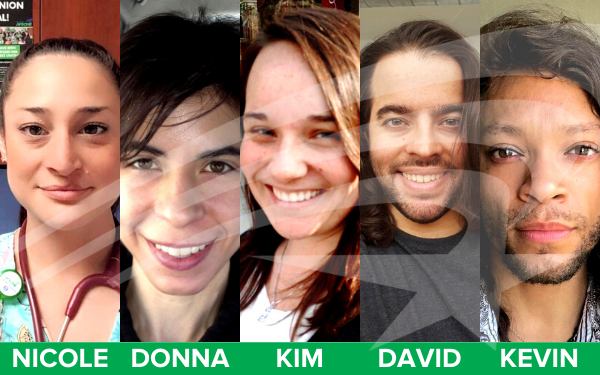AFSCME grows ranks in pandemic
Challenges bring workers together to generate change
 The past year and a half has been a time of unprecedented isolation, as the COVID-19 pandemic has kept many workers apart. But in some instances, it’s actually served to bring us together: Seeking the union difference, more than 1,500 workers have organized with AFSCME Council 31 since March 2020.
The past year and a half has been a time of unprecedented isolation, as the COVID-19 pandemic has kept many workers apart. But in some instances, it’s actually served to bring us together: Seeking the union difference, more than 1,500 workers have organized with AFSCME Council 31 since March 2020.
They’ve had to get creative to do the work needed to form a union. Since face-to-face discussions have always been the best way to build unity, AFSCME organizing committees pivoted to use Zoom, texting and other technology to speak with one another.
New unions were certified for employees in the following workplaces this year: Franklin-Williamson Bi-County Health Department, College of DuPage (custodians), Pathways (DSPs), Spring Creek Nursing Home, Lake County Probation, LaSalle County Health Department, CGH Medical Center and Niles-Maine District Library.
And employees in the following workplaces have majority support or petitions for representation pending: Art Institute of Chicago and School of the Art Institute, St. Charles Library, Oak Lawn Library, Waukegan Library and Whiteside County Health Department.
Growth is one of AFSCME Council 31’s most vital missions. It means bringing the rights and dignity that an AFSCME contract provides to as many workers as possible, giving them a voice in their workplace and strengthening our power at the bargaining table and in other critical battles.
Yet despite the strong public support for unions in our country today, the obstacles facing workers who want to form unions in the United States are enormous. The law is too often on the side of employers, who are determined to hold on to their power by keeping their workplaces union-free.
These new and aspiring AFSCME members not only stood up to threats, harassment, and intimidation to form their union, they pushed through the isolation of the pandemic to fight for a voice at work. Together they’re improving the lives of their co-workers and enhancing the quality of services they provide.
Nicole Dornes, CGH Medical Center
“COVID hindered our efforts in some ways, like slowing down our petition at the labor board, but because we were so persistent and the employees really wanted this union, we were able to overcome the obstacles and get it done. With COVID going on, AFSCME helped us get safety precautions in place earlier, like masking and PPE. We had each other’s backs so we could get what we needed, [which] CGH should have been thinking about in the first place.”
Donna Block, Niles-Maine District Library
“We realized that unionizing might be our only shot at protecting our staff, protecting the services we offer the public. We’re stronger than ever. Everyone is working together—the community, the library and the union. We never could have done it without everyone. We saved our jobs. And now we have the power to negotiate for ourselves and advocate for ourselves and each other.”
Kim Spasari, Lake County Probation
“We’ve had a lot of mistreatment from management over the years but I would say the pandemic really got us thinking because our county board started discussing layoffs as a way to save money. Once people caught wind that we’d be catching the brunt of the financial impact, we decided we needed to protect ourselves and have a say in what was going to happen to us. We had zero say in our job, no safety or security, and there was a lot of favoritism. The pandemic really got everybody on the same page to work together to unionize so we could do something about how we’ve been treated. It was harder and took us longer because of the pandemic but now everybody is definitely in it for the long haul.”
David Norris, School of the Art Institute
“I know it would be safer for my career to simply keep my head down and ignore the inequity around me, but when I think about how the institution treats its staff, how they treat my colleagues, I can’t just stare at the ground. SAIC’s tools for working on inequity are dull, and it’s time we invest in a precision tool that saves us time, saves us energy, helps to right wrongs, and ensures that we’re heard. Our union will do this for us.”
Kevin Whiteneir, Art Institute of Chicago
“I’m choosing our union to bring about genuine change. We have little to no say in the circumstances impacting our lives or jobs. In January, I was among those furloughed by administration for three months. We were told we were not essential to the functioning of the museum, only to be told in April that we suddenly were essential and were needed onsite before vaccines had even become available. Staff had no role in deciding the conditions of our return even though we would deal with the brunt of the impact of visitors, of operations, and of serving the Art Institute’s audience. Those of us on the organizing committee of the Art Institute of Chicago Workers United were certain then that this is our best chance at creating a better Art Institute for ourselves today, and for those of us to come tomorrow.”